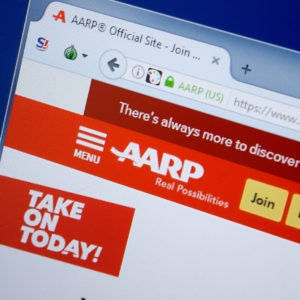AARP goes to great lengths to maintain its public image as a politically unaffiliated senior advocacy organization. However, a quick peek behind the scenes makes it clear this image is largely a mirage.
For years, the organization nurtured this perception, which helps the group skim by supporting polarizing policy proposals with little to no criticism. It’s time we address the truth about AARP and the conflict of interest that emerges from its false “objectivity.” Seniors deserve authentic advocacy, not advocates in name only.
A recent example of the disconnect between AARP’s image and reality was the organization’s “get-out-the-vote” push before the midterm elections. Such a campaign helps cultivate the organization’s independent reputation, but upon closer inspection of AARP’s political positions, its desire for seniors to vote Democratic becomes wholly unambiguous.
AARP was one of the chief advocacy groups in favor of the recently enacted and abysmal Inflation Reduction Act. This was due largely to the IRA’s radical changes to the Medicare Part D program. The IRA hands the government the power to set the prices of prescription drugs in the program — a change that might sound beneficial but actually upends our healthcare system in dangerous ways.
Drug manufacturers will be forced to reallocate their investments away from researching new cures and medicines to match the government’s demands, meaning the law sets our country back in the fight against diseases. Less investment in research and development means fewer options for seniors and less chance manufacturers will develop groundbreaking treatments as fast as patients hoped. Why would AARP support a law that does this to its members?
The answer may be that AARP’s biggest backer is a health insurance company that stood to gain significantly from the IRA becoming law. UnitedHealthcare pays AARP hundreds of millions in royalties for selling members its health insurance plans. With the IRA, health insurance companies like UnitedHealthcare are relieved of covering as much in Medicare Part D costs. While the law robs seniors of access, options and innovation, insurers stand to save — and pad their bottom line.
Insurance companies will have to cover only up to the federally mandated price, meaning if manufacturers can’t foot the bill and cannot provide the drug under the Medicare program, seniors are hung out to dry while insurance companies pocket the money they would have used to cover the medicine. When health insurers get richer, it makes one wonder how much AARP stands to gain.
In the months leading up to the midterms, AARP hosted numerous town halls with Democratic lawmakers to tout the IRA as a “historic win.” These lawmakers included candidates in tight races where a perception of backing from the AARP could have tipped the scales. AARP used these town halls as opportunities to prop these legislators up by giving them political cover for their disastrous IRA vote, effectively boosting their electoral prospects. AARP’s “non-profit” tax status prohibits them from endorsing these lawmakers, but they might as well have. These town halls continue, but now with lawmakers in safe blue seats.
When AARP bombards its members with messages to persuade them to support its positions, claims that their get-out-the-vote campaigns are “nonpartisan” ring hollow. Is it possible that by supporting Democrats win elections, AARP will earn vastly more revenue as an organization? Rather than serving as a political fig leaf for AARP’s nakedly partisan agenda, Republican elected officials should refuse to participate in their events and end the organization’s charade as an independent voice for seniors.
Seniors deserve a voice that truly represents them. Until AARP puts its members first, politicians should be called out for standing by them.


